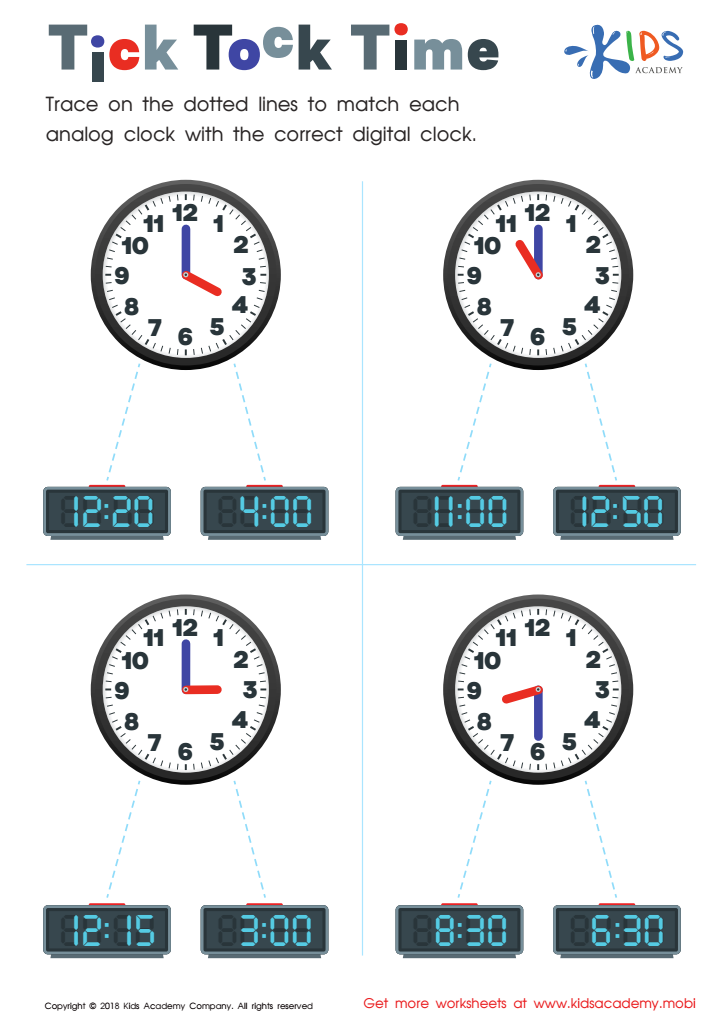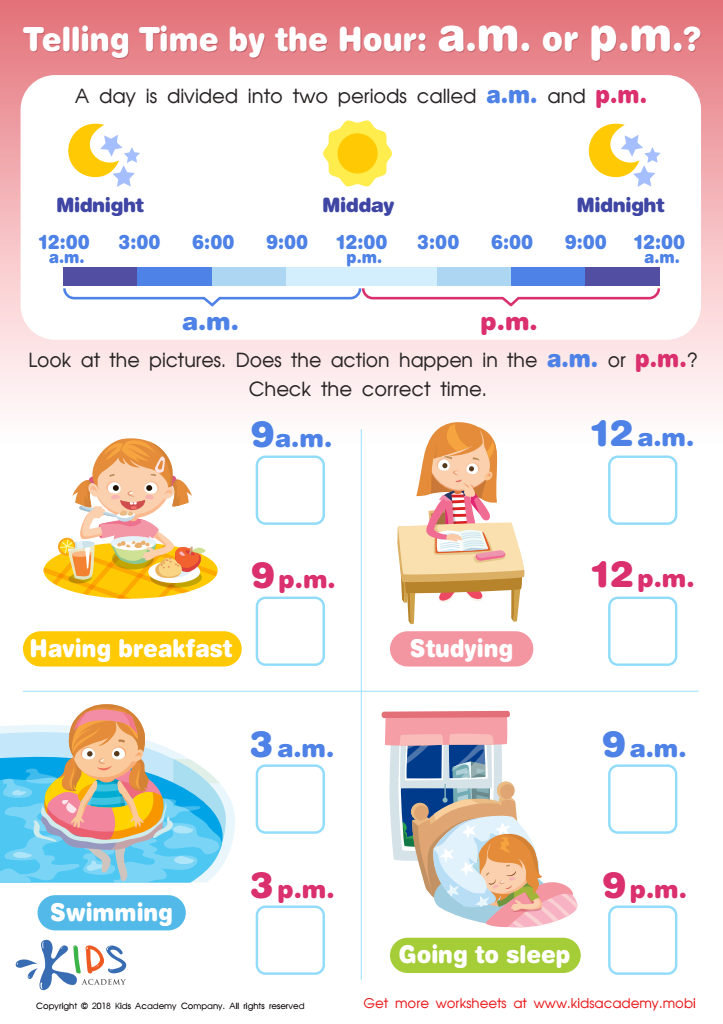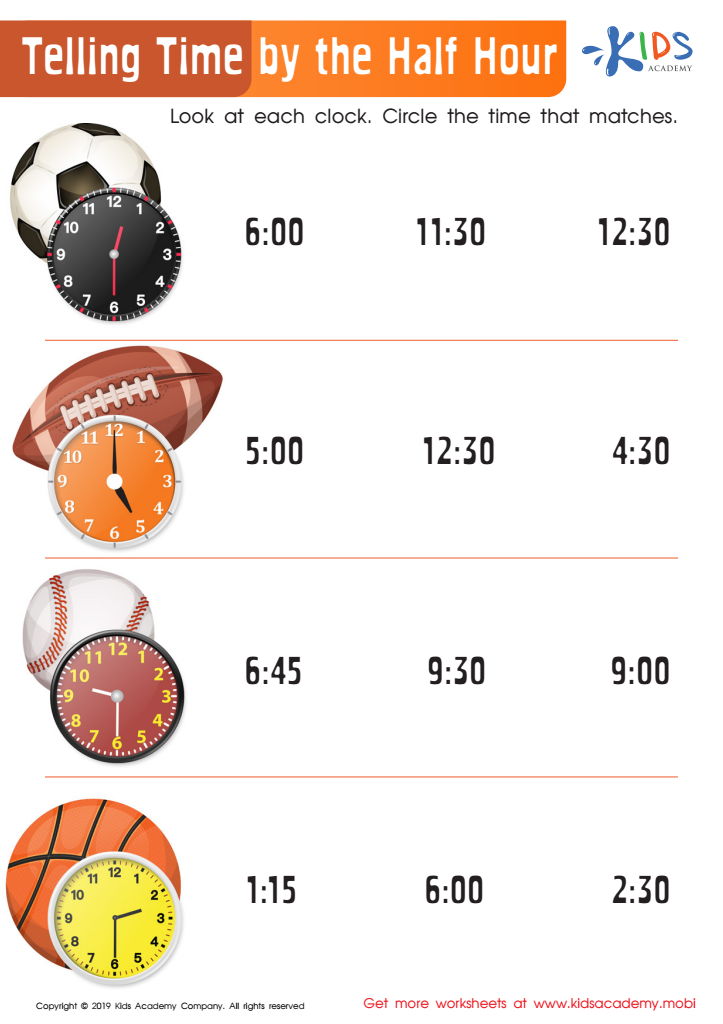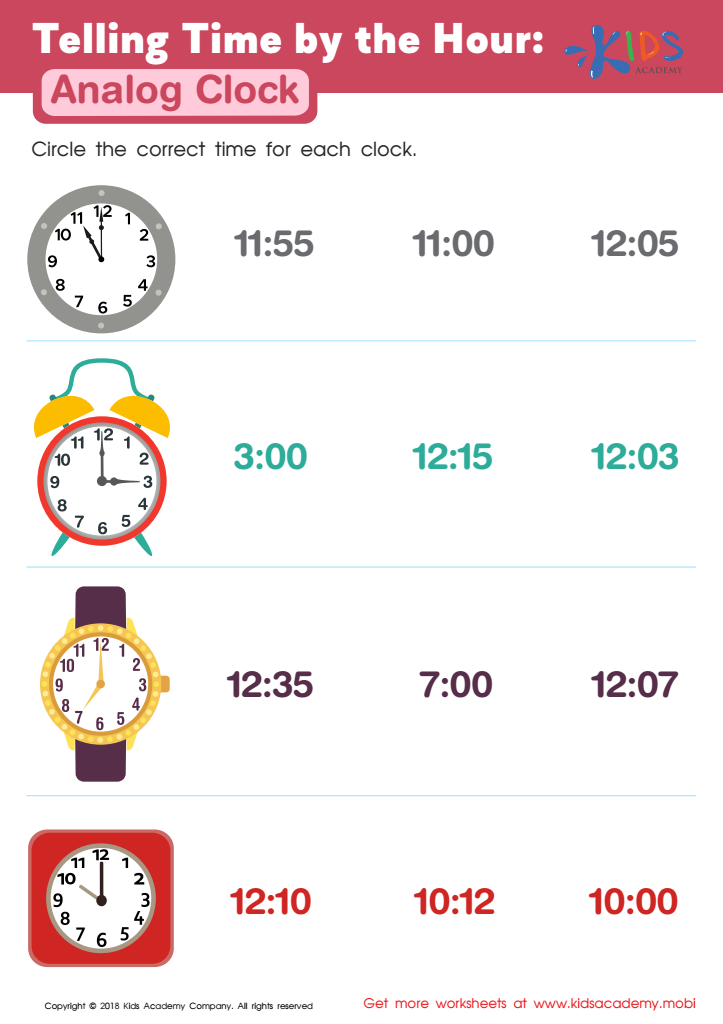Normal Time Worksheets for Ages 5-7
5 filtered results
-
From - To
Discover fun and engaging Normal Time Worksheets designed specifically for ages 5-7! Our carefully curated collection helps young learners grasp the basics of telling time with colorful and interactive exercises. From identifying hour and minute hands to matching digital and analog clocks, these activities make learning time a joyful experience. Perfect for use at home or in the classroom, our worksheets reinforce essential math skills with hands-on practice. Unlock a world of learning and help your child master the concept of time with Kids Academy! Download today and watch their confidence grow as they learn to tell time accurately and easily.


Years Worksheet


Tick Tock Time Worksheet


Tilling Time by the Hour: a.m. or p.m.? Worksheet


Telling Time by the Half Hour Worksheet


Telling Time by the Hour: Analog Clock Worksheet
Normal Time is crucial for children aged 5-7 as it influences their developing sense of structure and comprehension of the world. At this young age, children rely significantly on routines to understand daily activities and expectations, which play a critical role in their cognitive, emotional, and social development.
Firstly, having a consistent schedule helps children to differentiate between varied tasks such as playtime, learning, meals, and rest. This structured environment not only provides physiological benefits like better sleep and nutrition but also fosters a sense of security and stability, which is fundamental for young children's emotional well-being. Predictable routines enable children to adapt better and manage transitions smoothly, reducing anxiety and behavioral issues.
Secondly, incorporating Normal Time into daily activities supports cognitive skill-building such as memory, sequencing, and problem-solving. Familiar routines can enhance children's ability to categorize and follow multi-step directions, essential traits for academic success.
Furthermore, routines involving Normal Time allow for quality, undivided interactions with parents or teachers, increasing children's social skills and emotional intelligence. Time-bound activities like reading before bed or homework after school create traditions that strengthen family or teacher-student bonds.
In conclusion, integrating Normal Time into the lives of children aged 5-7 catalyzes their holistic development, ensuring they grow up with a solid foundation for future learning and personal growth.
 Assign to My Students
Assign to My Students















